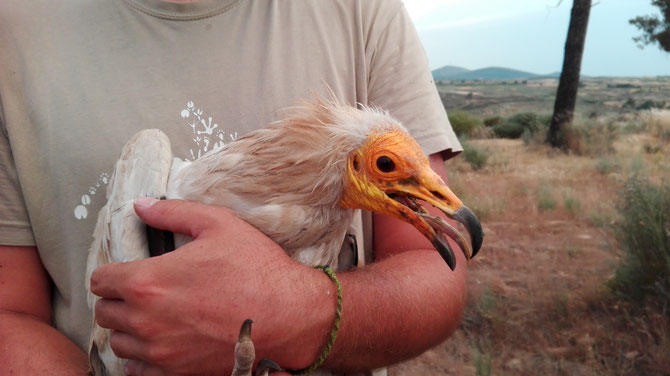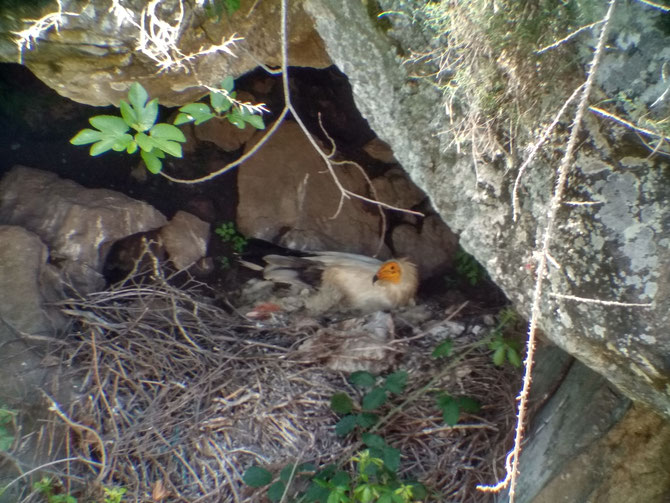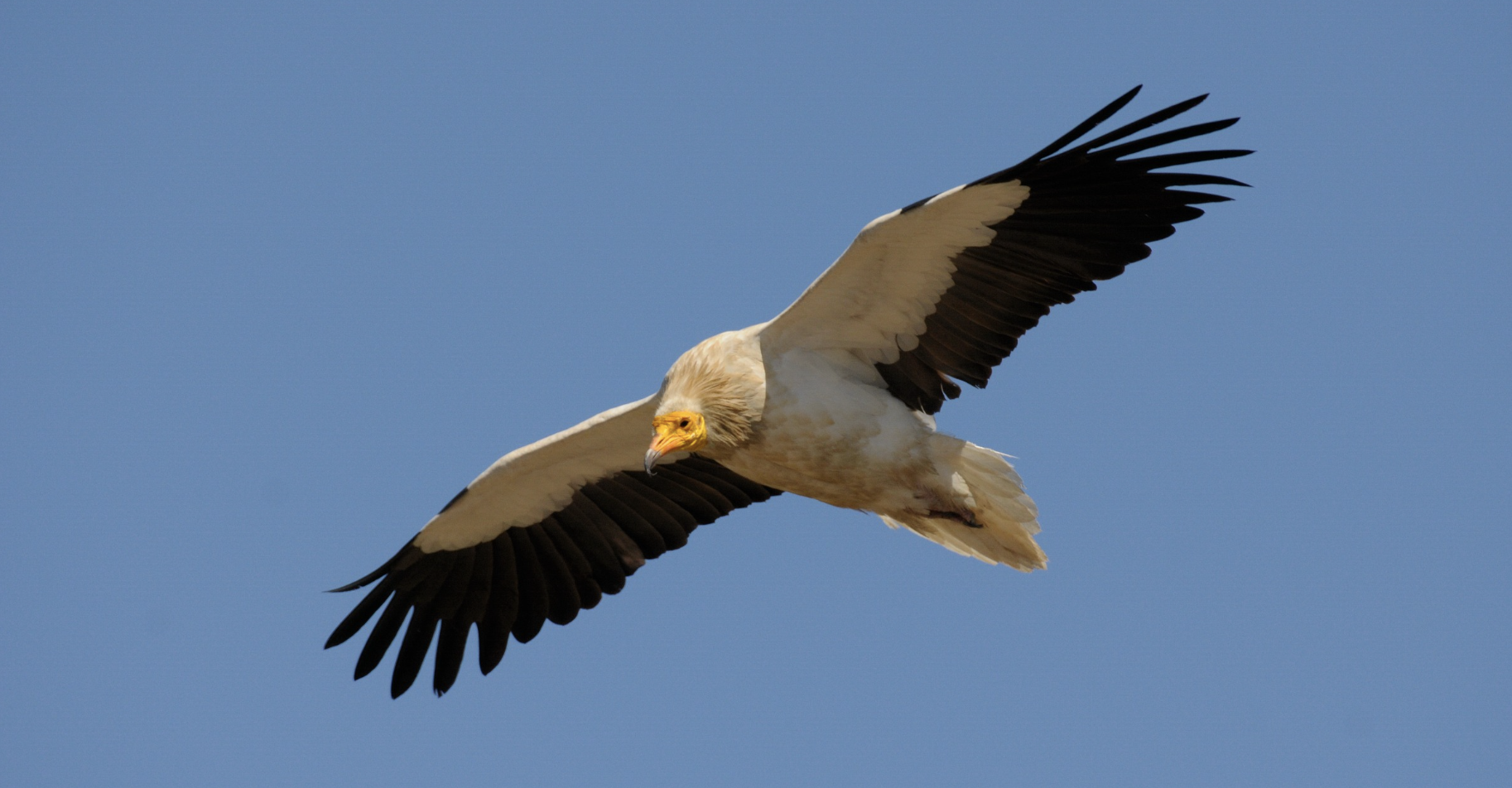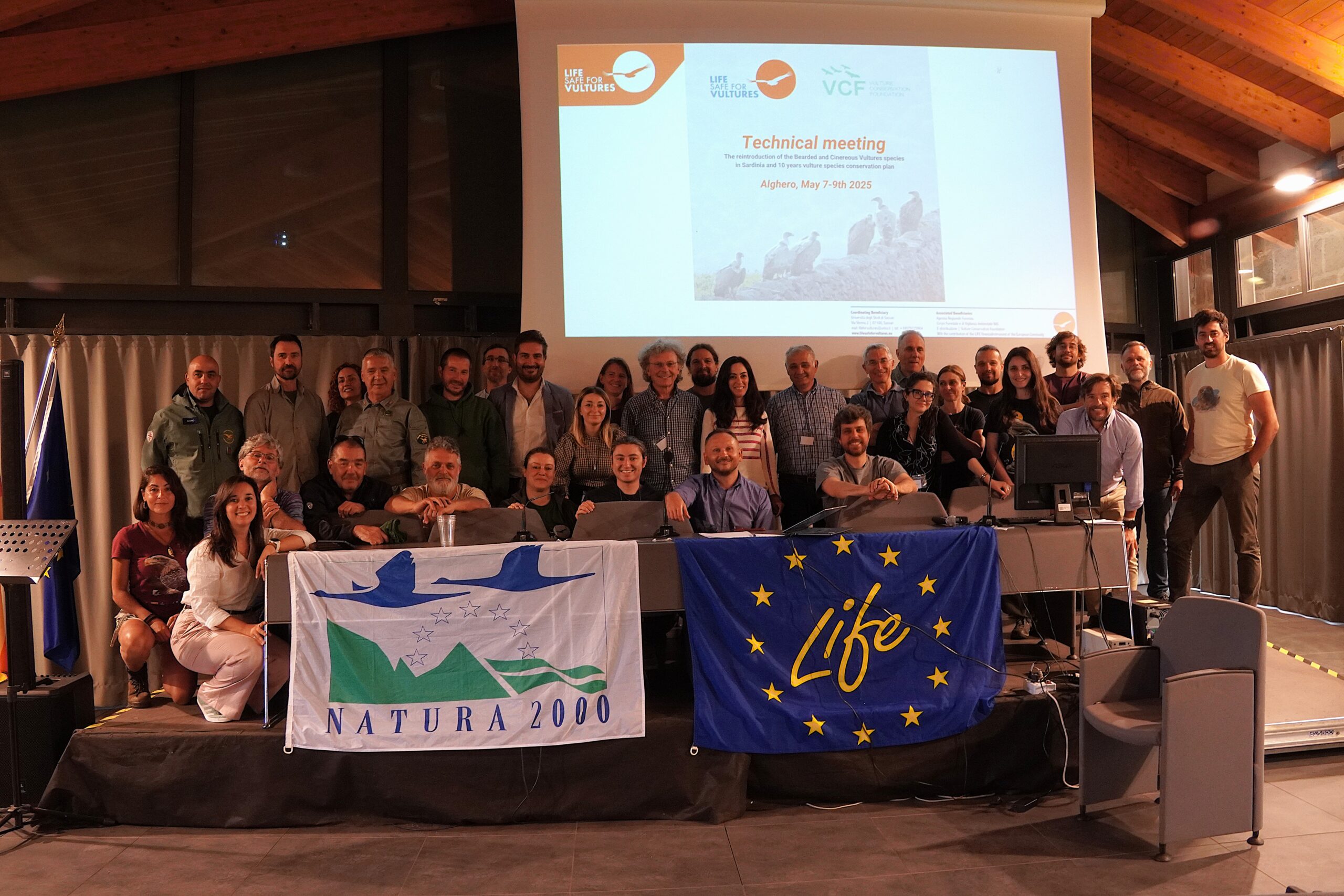
The five migratory Egyptian Vultures fitted with GPS transmitters continue to provide fascinating insights into their daily activities since returning to their summer ranges in the spring. We tagged the birds to monitor their movements as part of the LIFE Rupis project on the Portugal-Spain border.
Watch their movements!
Douro
Although one of the breeding adults, “Douro”, lost its transmitter in May, it is thought to have raised one chick successfully according to our colleague Isidoro Carbonell who is conducting nest monitoring in the Parque Natural de Arribes del Duero on the Spanish side of the Douro Canyon.

Huebra
Isidoro Carbonell also reports that although a second breeding bird, “Huebra” (tagged in associated with Saloro SLU), has not transmitted data since April, it is alive and well and has been raising a chick in the same nest as in previous years. It is possible that the transmitter might have failed, perhaps due to the batter discharging while the bird was incubating in the nest cave.
Batuecas A and Faia
The second Saloro-tagged adult, “Batuecas A”, has also been raising a chick this summer. The only tracked adult known to have failed to hatch a chick this year is “Faia”, possibly due to a later arrival (mid-March compared to late February or early March) and late laying date which can increase the risk of failure.
All of the adult vultures have used similar areas to previous years, but interestingly, both Faia and Batuecas A have visited some of the project’s supplementary feeding sites more regularly than in previous years. This might be because they have started to learn that these sites provide relatively predictable sources of food and it will be interesting to see if their use of these sites increases during the pre-migration period over the next few weeks.
Rupis
The non-breeding sub-adult, “Rupis”, which has been tracked for the longest, since 2016, has shown some very interesting changes to its movement patterns. During the summer periods of 2016-18 Rupis spent most of the time foraging in the farmland to the east of the Douro Canyon in Zamora and Salamanca Provinces in Spain. This spring Rupis returned to the summer range earlier than in previous years and, after initially using similar foraging areas to previous years, in April started to roost on the cliffs of the Douro Canyon to the east of Freixiosa. Since then, instead of foraging over large areas in Spain, Rupis has occupied a much smaller core range than previous years, travelling north-west into Portugal usually within 10 km of the roost site. As Rupis is in its sixth calendar year and reaching breeding age, the vulture may be in the process of establishing a territory for future breeding seasons. This is a particularly risky period for Egyptian Vultures as they compete for and defend their territories from other Egyptian Vultures and cliff-nesting raptors. We will keep a close watch on Rupis’ movements and hope for some breeding activity next year.
Batuecas P
A sixth Egyptian Vulture, “Batuecas P”, which did not migrate after it fledged in 2017 but instead joined the non-migratory population in Extremadura, has spent most of the summer close to its natal origin on the Spanish side of the border in the Rupis project area, close to the Douro Canyon, as well as in a favoured foraging area in the province of Cáceres, Extremadura. This young vulture has also visited some of the LIFE Rupis project’s supplementary feeding sites this summer. It is unlikely that this vulture will migrate with the other tracked birds this autumn, but will probably return to its preferred wintering range in Extremadura, with the increasing population of non-migratory Egyptian Vultures.
How many km does each bird travel per day on average?
Non-breeding birds Rupis and Batuecas P travel approximately 44km and 47km per day, respectively. Breeding adults, on the other hand, travel less with Batuecas A travelling 22km, Douro 25km, Faia 27km, and Huebra 23km per day on average. The non-breeding birds travel further per day, as expected because they are not restricted to forage within a certain distance of the nest site. This essentially tells us that the adults are generally foraging well within 10 km of the nest sites. We would expect these distances to increase once the chicks have fledged and the adults forage further afield.
Continuing our monitoring efforts
So far this summer attempts to capture more Egyptian Vultures to fit them with transmitters have been unsuccessful, but the teams in the field will continue to try for the next few weeks. Meanwhile, the vultures that we have tracked since 2016 will continue to provide exciting insights into their daily movement patterns as they prepare to migrate once more to their wintering grounds in the West African Sahel. We will provide another update during the migration period in September and October.
LIFE Rupis

The LIFE Rupis conservation project, led by Portuguese wildlife organisation Sociedade Portuguesa para o Estudo das Aves (SPEA), and funded by the European Union’s LIFE Fund and the MAVA Foundation, is working in the cross-border Douro region of Spain and Portugal to protect and strengthen the populations of Egyptian vultures and Bonelli´s eagle. With around 135 breeding pairs, the region has one of the largest population of Egyptian vultures in Europe. Creating a network of feeding stations, improving habitat and nesting sites as well as tackling the major threats of electrocution from electricity pylons and illegal wildlife poisoning, the LIFE Rupis project will strengthen the population and improve breeding rates.





